Last updated on December 25th, 2022
The American bison is a majestic animal that radiates strength – a fitting choice as the national mammal of the United States. It is also a symbol of hope and resilience, coming back from the brink of extinction against all odds. Indigenous peoples have always depended on it for survival and spiritual guidance. After tense encounters, new settlers also learned to embrace the horned beast and everything it represents. Read on to discover 40 interesting facts about American Bison.
Basic Facts About The Bison
1. Big Beasts
Bison are the most massive mammals on the continent. A baby weighs around 70 pounds at birth and 2,000 pounds in adulthood. Males are over 6 feet tall and 11 feet long. In captivity, they can weigh 3,800 pounds.
2. Fast and Fearsome
Do not be fooled by their looks. Bison are far from being lumbering laggards. They are fast enough to run 45 mph for 5 miles. That is on par with some horses, elks, coyotes, deer, moose, and gray foxes.
3. Amazing Agility
Bison usually travel at a leisurely pace around the Great Plains. However, they can perform impressive feats of athleticism if necessary, such as jumping high fences, swimming in deep waters, and spinning quickly to defend themselves.
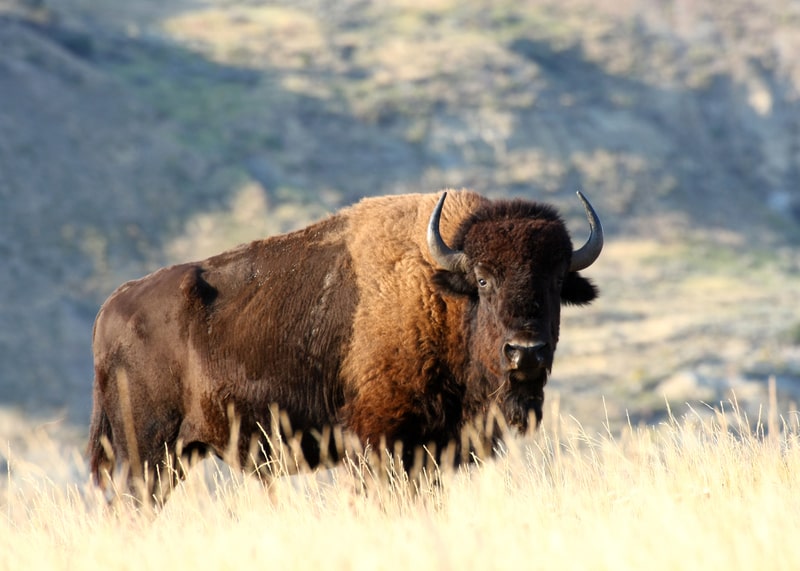
4. Tell Tail Signs
Bison facial expressions are hard to read. If you want to know how they feel, check their tails. Is it hanging down? The bison is calm. Is it shooting up? It is ready to charge.
5. A Voracious Vegetarian
Bison are herbivores. They eat grasses, weeds, and leafy plants, moving from one foraging site to another. In the winter, they use their heads to remove the layer of snow to uncover vegetation. They can spend up to 11 hours each day foraging.
6. Life Expectancy
Longevity depends on their living arrangements. A bison in the wild will typically survive for about 15 years. Life expectancy jumps to 25 years in captivity if protected from hunters and given ample food.
7. Bison Family
When reading about bison, you may encounter confusing terms that refer to other animals. Those are just alternate names. Adult male bison are called bulls, females are cows, and babies are calves.
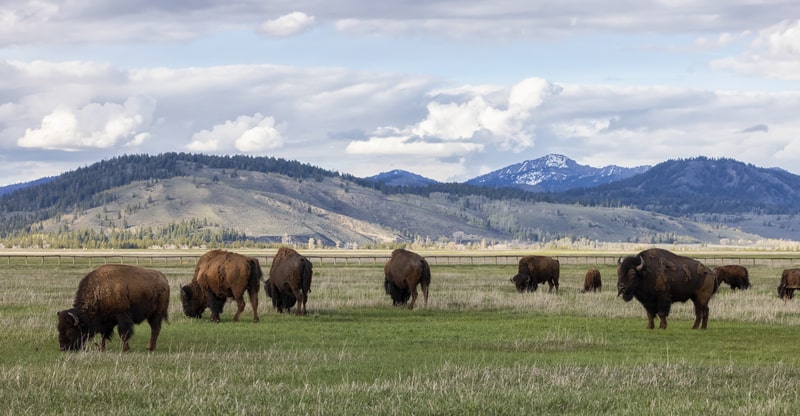
Facts about Origins and Evolution Of The Bison
8. Bison or Buffalo?
In scientific terminology, you can’t use these terms interchangeably. Bison are large bovines living in Europe and America, while true buffalos are under the subtribe Bubalina, native to Asia and Africa. They diverged from a common ancestor 13.7 million years ago.
9. American vs. European Bison
Look closely at these cousins to see the difference. The American bison has more body hair, shorter legs, and a lower head. It also has 15 ribs and four lumbar vertebrae, while the European species has 14 and 5, respectively.
10. Wild and Free
Most of the bison alive today have cattle genes due to breeding. If you want to see pure bison, go to Yellowstone National Park. The local herds have been living there since prehistoric times.
11. Ancient Origins
The ancestors of the American bison came from South Asia. Around 400,000 years ago, they used ancient land bridges to cross the ocean and reach the continent.
12. Gigantic Beasts
The fossil records are impressive. One extinct specie identified as Bison latifrons grew horns up to nine feet from tip-to-tip, whereas modern bison only reach three feet. The fearsome horns would have deterred giant bears and saber-toothed cats from launching an attack.
13. Bison Evolution
Large ancient animals disappeared 30,000 years ago, possibly due to climate change and human hunting. Bison latifrons were among them, but their smaller descendants called Bison antiquus lived. It is from this line that we get the modern survivor.
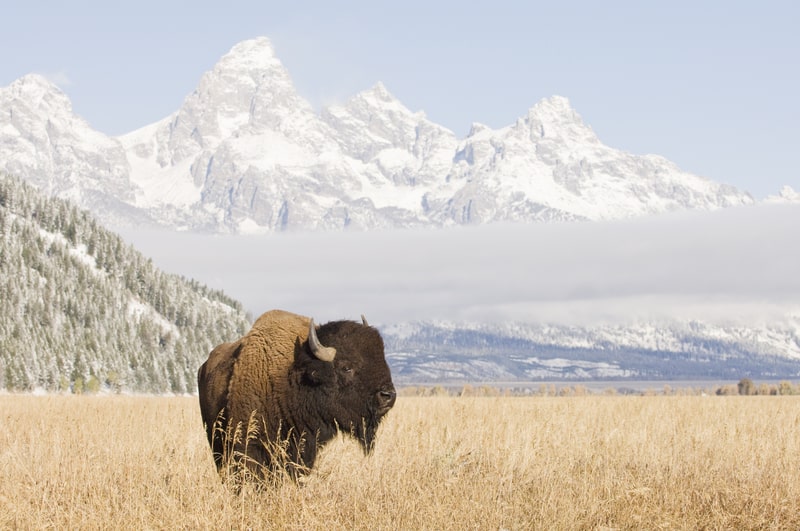
The Need for Conservation
14. Population Fluctuation
Before the 1800s, up to 60 million bison roamed North America from Alaska to Mexico. Systematic hunting almost drove them to extinction by 1900 as European settlers moved west. Fortunately, their population bounced to 360,000 by 2000 thanks to conservation efforts.
15. Hunter to Savior
Theodore Roosevelt was a hunter before he became president. The young Teddy went to Dakota to look for bison in 1883, but he returned to New York with a different outlook. He saw the devastation and swore to save the endangered beast.
16. Restoring the Herds
Only a few hundred remained in 1905. Concerned individuals formed the American Bison Society. They launched a breeding program at the New York City Zoo and started a free-ranging herd in South Dakota.
17. Government Intervention
Preventing extinction requires government intervention. The Department of Interior became the primary caretaker of the bison in the late 19th century. It continues to manage public lands in a dozen states. These support 17 herds with a total of 10,000 bison.
Bison Reproduction
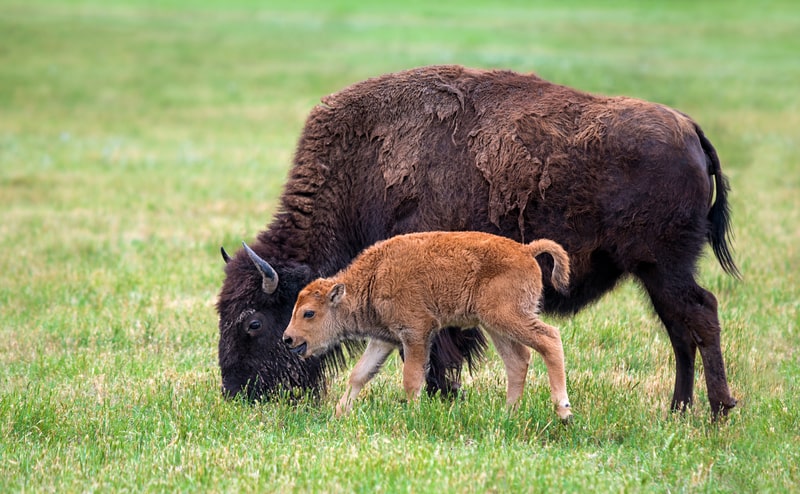
18. Red Dog
Baby bison are born with an orange-red coat. Some people call them red dogs because of their fiery color. However, it does not last long. The hair darkens to dark brown after a few months.
19. Girls Stick Together
Bison are social animals that form large herds. Females tend to stick together for protection. Mothers take their offspring wherever they go. These maternal herds may include a few older males.
20. Band of Brothers
Around the age of three, male offspring will leave their mothers and join other males in bachelor herds. A few may choose to live alone. Males and females live separately except for the breeding season.
21. Chasing Challengers
Dominant males will mate with a small group of females. If rivals try to approach, they will chase them away. Sometimes the other males are persistent – bellowing and roaring to get female attention from afar.
22. Breeding Season
Bison tend to breed from July to September. After mingling with females, the most dominant bulls can mate within the first two weeks. Subordinates could mate with the rest of the estrous cows.
23. A Typical Life Cycle
Females can start to mate by the age of two or three. However, they can only produce one baby with each pregnancy. Males hit their prime between six to ten years old.
24. Hitting the Dirt to Flirt
Bison use various strategies to mate during the breeding season. The males may roll in the dirt to leave their scent on the ground and display their strength to any nearby female. This wallowing behavior also helps them shed fur and deter flies.
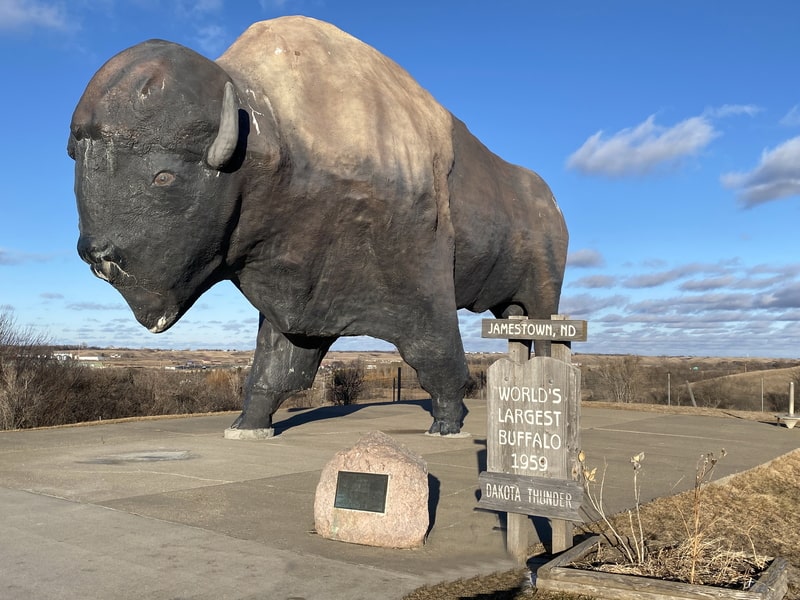
25. Hello and Goodbye
Bulls and cows part ways once the breeding season is over. Mothers give birth within the female herd and take care of the calf until it leaves. Males are nowhere in sight.
26. Social Hierarchy
Every bison has a place within the herd. They follow a social hierarchy based on dominance, usually determined at birth. Calves born early tend to grow bigger than those that come later. They also have a higher fertility rate.
27. Mother and Child
Females carry the baby in their womb for 285 days. The lone calf will nurse until the mother gives birth to another baby the following year. Most become independent before they turn one.
Interesting Behaviors
28. Same-sex Pairings
Nearly 500 animal species have documented homosexual behaviors, including the American bison. In bachelor herds, bulls mount each other as more of a social bonding activity than a display of dominance. Around 55% of mounting among young males occurs with the same gender.
29. Natural Insect Deterrents
Bison hate insects. These pesky creatures inflict countless painful bites. They cope by rubbing their horns against aromatic trees like pine and cedar, releasing a natural insect deterrent for relief.
30. Bison as Prey
Wolves do not care about bison size. Packs will prey on them to survive when food is scarce. The wolves focus on weak, young, or injured individuals. Herds know this and respond accordingly.
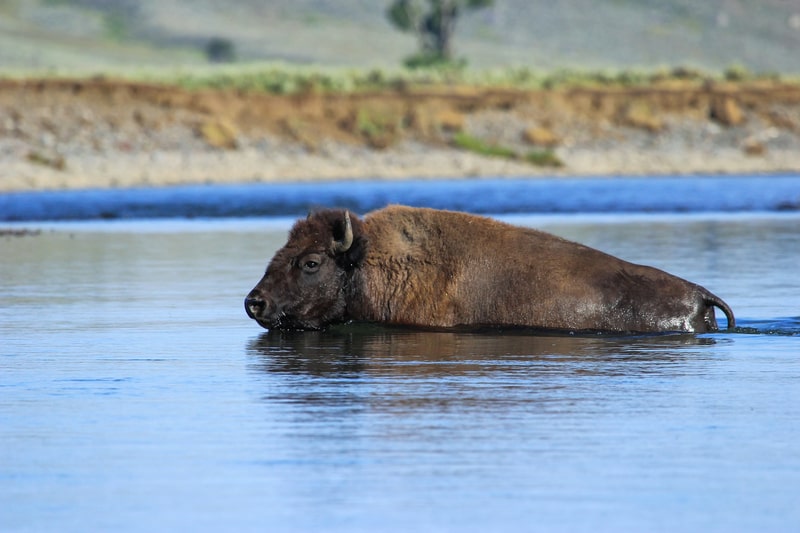
31. Bison Defense
Calves are easy targets. When they notice predators, they quickly run toward adult bison for protection. If there is a body of water nearby, they may swim in it to stay out of reach. Fleeing herds let cows and calves take the lead while bulls guard the rear.
32. Bison Aggression
Fights can erupt between American bison during the mating season. Their angled horns cannot inflict much damage, so they prefer butting heads with their thick skulls. Their European cousins have forward-pointing horns that are better weapons.
. . . continue reading on the next page
